Key takeaways
- Let’s Play emphasizes joining a child’s exploration, fostering creativity and imagination while allowing for patience and curiosity.
- Organized activities create predictability and connection, making it easier for parents to engage deeply and support their child’s independence.
- Tailoring activities to different age groups ensures engagement and promotes problem-solving and teamwork skills.
- Maintaining a consistent yet flexible playtime routine enhances anticipation and enjoyment for both children and parents.

Understanding Let’s Play concept
Let’s Play is all about following a child’s lead, where play becomes a language rather than just an activity. When I first embraced this idea, I noticed how it shifted my focus from directing to simply joining in, which made my child’s imagination truly shine. Have you ever seen how a simple block can turn into a spaceship or a castle with just a child’s creativity?
What fascinates me about Let’s Play is how it honors the child’s choices and timing. It’s not about structured lessons or goals, but about being present and responsive to what the child wants to explore. This approach reminded me that sometimes, the best guidance is patience and curiosity rather than answers.
I’ve found that understanding Let’s Play requires trusting both your child and yourself as a partner in discovery. It’s a shift from “teaching” to “playing alongside,” which can feel vulnerable but incredibly rewarding. Have you ever felt that pure joy when you see your child’s face light up because you’re truly tuned into their world? That’s the magic of Let’s Play.
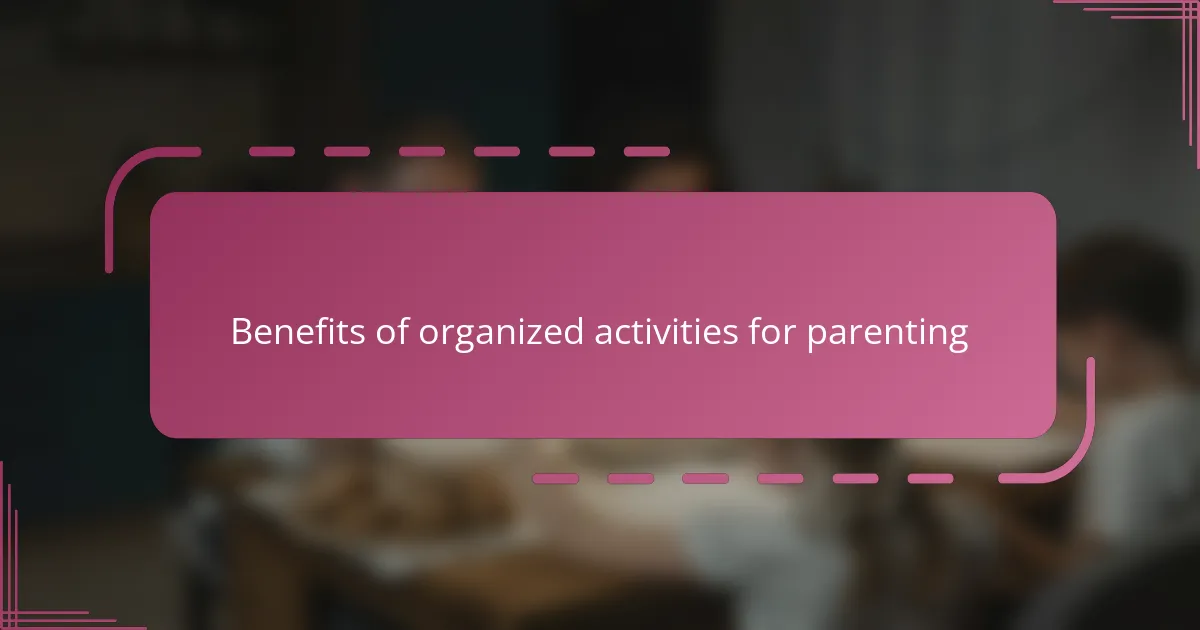
Benefits of organized activities for parenting
Organized activities have been a game changer in my parenting journey because they create a sense of rhythm and predictability. When I set aside specific times for play or learning, it helps both me and my child to better anticipate what’s coming next, reducing stress for everyone. Have you noticed how kids seem more relaxed and open when they know what to expect?
Another benefit I’ve experienced is how organized activities make it easier to connect deeply with my child. Instead of scrambling to figure out what to do, I can focus fully on being present and engaged. I remember one afternoon when a simple craft session became a heartfelt conversation—we rarely had moments like that before organizing our time this way.
Lastly, I can’t overlook how these activities encourage my child’s independence while still keeping us connected. By planning activities using Let’s Play, I’ve seen my child take initiative and make choices confidently, knowing I’m nearby to support. Isn’t it amazing when you watch your little one grow both in creativity and self-assurance? That balance feels priceless to me.
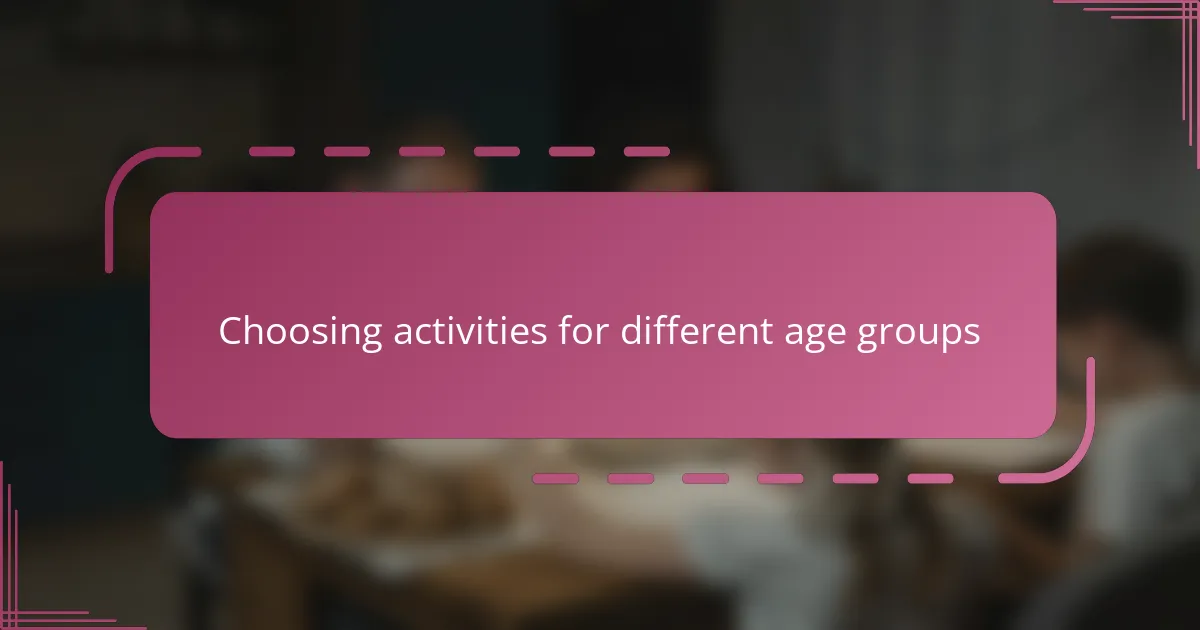
Choosing activities for different age groups
Choosing activities for different age groups requires me to tune into what my child is ready for at each stage. For toddlers, I’ve noticed simple sensory play works wonders—things like water, sand, or soft fabrics that spark their curiosity without overwhelming them. Have you ever watched a little one’s face light up when they discover the feel of something new? That moment feels truly magical.
As my child grew, I shifted to activities that invited more imagination and problem-solving, like building blocks or pretend play sets. I found that tailoring activities to match their developing skills kept them interested and challenged, without causing frustration. Does it surprise you how quickly they can master something that seemed tricky just weeks before?
When I planned activities for older kids, I made sure to include chances for teamwork and creativity, like group games or simple science experiments. These sparked not just fun, but also deeper conversations about how things work or how to collaborate with others. It’s fascinating to see how different ages engage in play, and adjusting to those differences makes my time with them all the more rewarding.
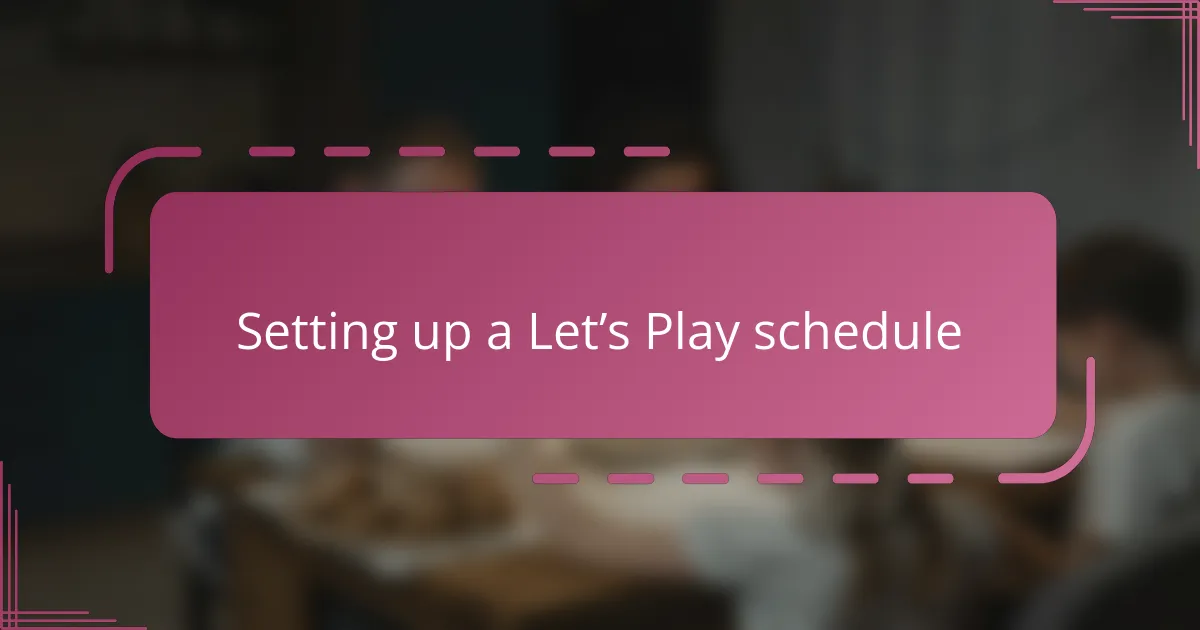
Setting up a Let’s Play schedule
Setting up a Let’s Play schedule has been a balancing act for me between creating consistency and leaving space for spontaneity. I found that having designated play times helped my child feel secure, yet I made sure not to box us into rigid routines that might stifle their natural creativity. Have you ever tried to plan play only to realize the real fun starts when you let go a little?
One thing I learned quickly is the importance of reading my child’s energy throughout the day before sticking to the schedule. Sometimes, their eagerness to play is at its peak in the morning, while other days, a quiet afternoon works best for imagination to take flight. I’ve adjusted our Let’s Play times accordingly, and it’s been rewarding to see how much more engaged they become when the timing feels right to them.
I also made it a habit to prepare a loose plan but stay open to detours, which kept the experience fresh for both of us. There were moments when our scheduled activity turned into something unexpected and wonderful, like a simple dress-up game blossoming into a full storytelling session. Doesn’t it feel great when a plan leads to surprises that bring even more joy?

Tools and materials for Let’s Play
When I first gathered tools and materials for Let’s Play, I realized it didn’t require fancy or expensive items. Simple things like scarves, cardboard boxes, and everyday kitchen utensils often sparked the most imaginative games. Have you ever noticed how a plain spoon becomes a magic wand or a telescope in a child’s hands? That’s the beauty of keeping materials open-ended and inviting.
I also found that having a variety of sensory items—like playdough, water beads, or textured fabrics—added a rich layer to our playtime. These materials didn’t just keep my child busy; they engaged their senses and encouraged curiosity. It’s amazing how something as basic as a bowl of rice can turn into a tactile learning adventure when handled with care.
Lastly, I kept a small basket of loose parts handy—things like buttons, pebbles, and wooden blocks—that my child could freely explore. These bits and pieces became the building blocks for stories, creations, and endless discoveries. Isn’t it thrilling to see how kids transform ordinary objects into extraordinary worlds with just a little nudge? Having these materials ready made tuning into my child’s play feels effortless and joyful.
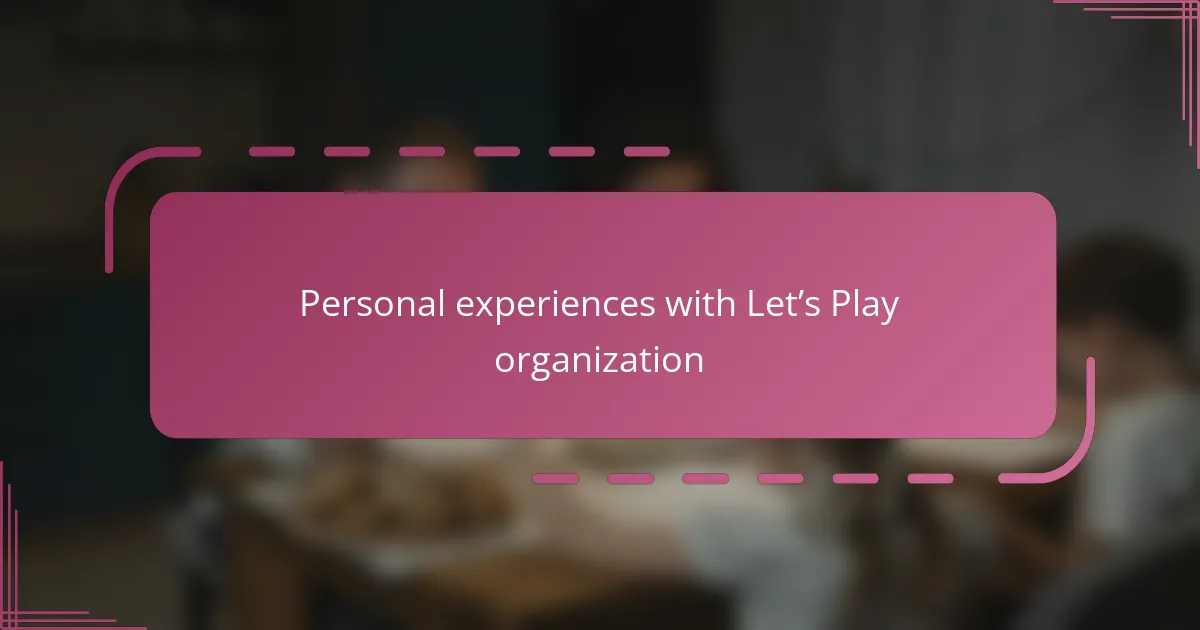
Personal experiences with Let’s Play organization
When I started organizing activities using Let’s Play, I quickly learned that flexibility is key. One afternoon, I planned a simple drawing session, but my child wanted to build a fort instead. Letting go of the plan and following their lead turned what could have been a frustrating moment into one filled with laughter and creativity. Have you ever been surprised by how a change of plans can make play even more magical?
I also noticed that having a loose framework helped me feel more confident as a parent. By setting a general idea of what to explore but not imposing strict rules, I could stay present and responsive. It reminded me that the goal isn’t perfection, but connection—and seeing my child’s eyes light up as they guided the play made every little tweak worthwhile.
One thing that stood out for me was how Let’s Play organization deepened our bond. During one session, my child introduced me to a world they’d created with toy animals. Sitting quietly and truly listening made me realize how powerful play is as a way to understand their feelings and thoughts. Doesn’t it make you wonder why we don’t always make space for these moments more often?
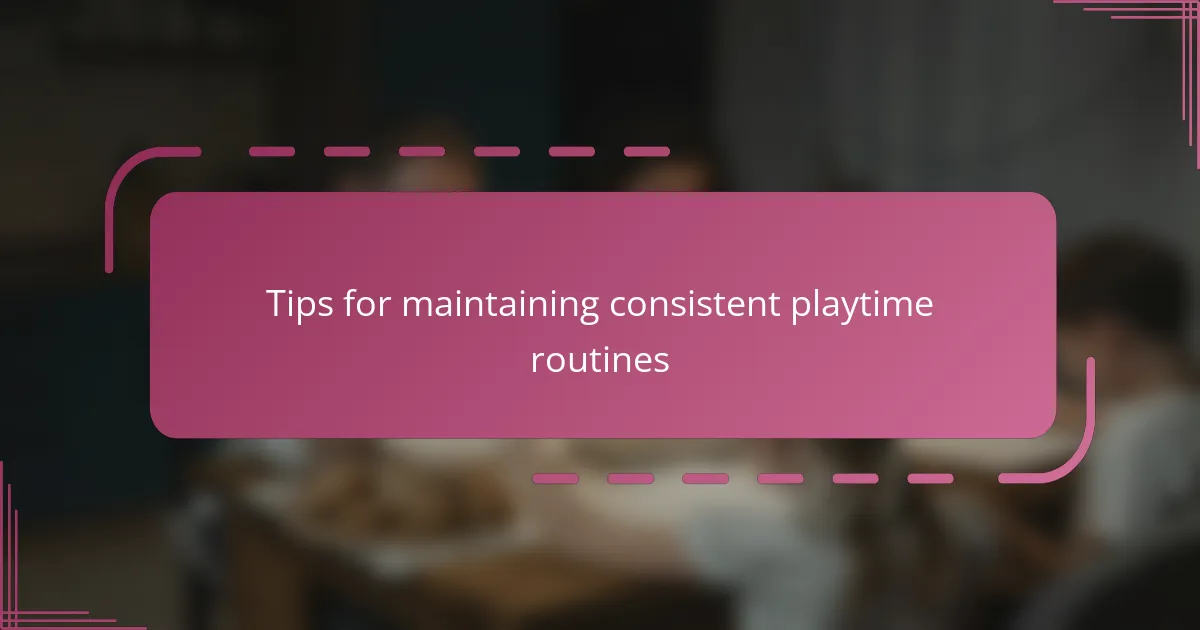
Tips for maintaining consistent playtime routines
Consistency in playtime routines has made a real difference for us. I found that sticking to a regular time each day — even if it’s just 15 minutes — helped my child anticipate when it’s playtime, which reduced those “I’m bored” moments. Have you noticed how predictability can create a comforting rhythm for both children and parents?
I also learned that blending routine with flexibility keeps things from feeling like a chore. Some days, we follow the routine closely; other days, we pivot based on energy and mood. For example, one afternoon we switched from a planned art project to an impromptu dance party, and that spontaneity kept play fresh and exciting. Isn’t it amazing how listening and adapting can deepen the joy of play?
Lastly, I make it a point to prepare the play space in advance and have materials ready to go. This small step eliminates scramble time and helps us dive right into fun. When my child sees the setup waiting, it signals that play is special and important, which I believe boosts their enthusiasm and focus. Do you find that being ready in advance helps you savor those precious moments more?


